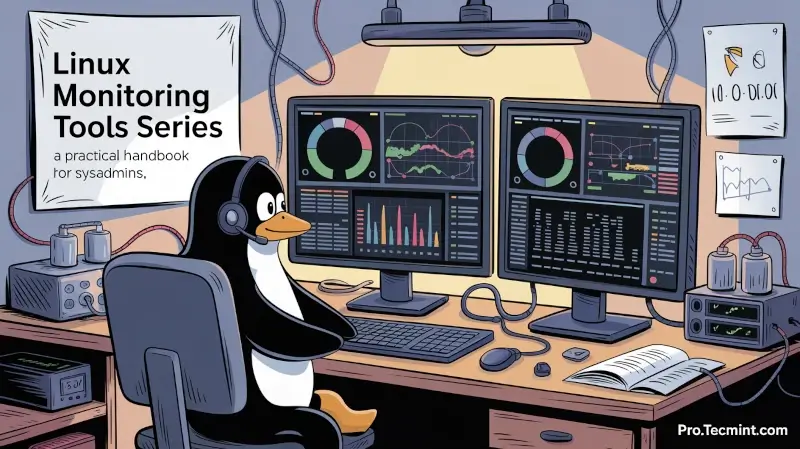Linux Performance Monitoring Tools
In this series, we explore the most widely used Linux monitoring tools, showing how to install them, use them, and troubleshoot CPU, memory, disk, and network performance issues.

Monitoring and debugging Linux system performance is one of the most challenging responsibilities for any System or Network Administrator, as it requires patience, skill, and a deep knowledge of how Linux behaves under different loads.
A system may appear to be running fine, but underneath it could be facing memory pressure, high CPU utilization, or network congestion, and without the right monitoring tools, it becomes very difficult to identify these issues and take corrective action in time.
After working as a Linux Administrator for more than 10 years, I have realized that the real strength of a sysadmin lies in knowing how to monitor and troubleshoot performance problems effectively. A stable system is not just about uptime; it is about continuously keeping an eye on what’s happening inside.
In this Linux Monitoring Tools Series, we will cover the most frequently used command-line and web-based tools in each chapter that explain what the tool does, how to install it, and how to use it in real-world situations.
This series is not just a list of commands; it is designed as a practical handbook that you can follow step by step, pick the right tool for your problem, and apply it immediately to your systems.
📖 What You’ll Find in This Series
The series is divided into different categories of monitoring tools for easy reference.
- Process & Resource Monitoring:
top,htop,atop,btop,nmon,collectl,s-tui - Memory, Disk & I/O Monitoring:
vmstat,iostat,iotop - Network Monitoring & Analysis:
lsof,tcpdump,netstat/ss,iftop,nethogs,iptraf,arpwatch,suricata - User & Service Monitoring:
psacct/acct,monit - Web & Graphical Dashboards:
monitorix,vnstat-php,netdata,nagios
Each tool will have its own dedicated chapter with commands, examples, and screenshots to help you understand it better.
Why You Should Follow This Series
When problems occur in a production server, time is critical, and you just cannot afford to spend hours searching forums or flipping through documentation.
If you’re serious about maintaining Linux systems, you must know these monitoring tools, which are used daily by system administrators to quickly identify performance bottlenecks, debug issues, and maintain healthy Linux systems.
By the end of this series, you will have a clear understanding of how to use these tools and when to use them, which will not only save you time but also make you more confident in handling critical server issues.
Ongoing Updates
Every week, we will add a new tool, along with examples and practical tips for using it. Bookmark this page and check back regularly to stay up to date.